SUMMARY
This is AI generated summarization, which may have errors. For context, always refer to the full article.
MANILA, Philippines – Isn’t it possible to widen roads without cutting down trees?
This was the question posed by environmentalists to the secretaries of the Department of Public Works and Highways (DPWH) and the Department of Environment and Natural Resources (DENR) during a forum on Thursday, July 3. (READ: Cebuanos oppose DPWH plan to cut century-old trees)
Trees should be part of urban development instead of a victim to it, said urban planner and architect Felino Palafox Jr.
Rather than cut decades-old trees to widen highways, the government should “provide alternative solutions to traffic congestion such as diversion roads, widening of alignments that do not involve cutting of old trees, or containing existing trees within an island, providing expansion through outer lanes,” reads the joint manifesto of green groups like the Citizens’ Organization Concerned with Advocating Philippine Environmental Sustainability (COCAP).
In his presentation, Palafox showed how progressive countries like Singapore, Dubai, Japan, Warsaw, and the Netherlands used trees and greenery as centerpieces for their cities.
“Petrol-rich Dubai even borrowed money just to invest in green infrastructure and import trees to make its city beautiful. Singapore imports acacia trees from the Philippines to line its roads,” said Palafox.
The value of trees to urban spaces is beyond valuable, he said. Trees help bring down the temperature of concrete jungles, absorb air pollution and alleviate flooding. They beautify cities and contribute to higher quality of living of urban residents.
Including trees in road design need not compromise government standards for safe and wide roads, he emphasized.
To make his point clear, he flashed designs of 20-, 30-, and 40-meter-wide roads featuring trees.
These roads fulfill government standards requiring national primary roads to have at least 4 lanes or at least 15 meters in width.
He also showed a design to redevelop MacArthur Highway, which is now being widened for the Manila North Road widening project.
So far, 1,059 trees have been cut along the major thoroughfare. A cement road now lies where they once stood. Some 770 trees remain standing since the cutting permit given to DPWH expired last February.
But Palafox’s design preserves the trees, some of which are 50-year-old acacia trees.
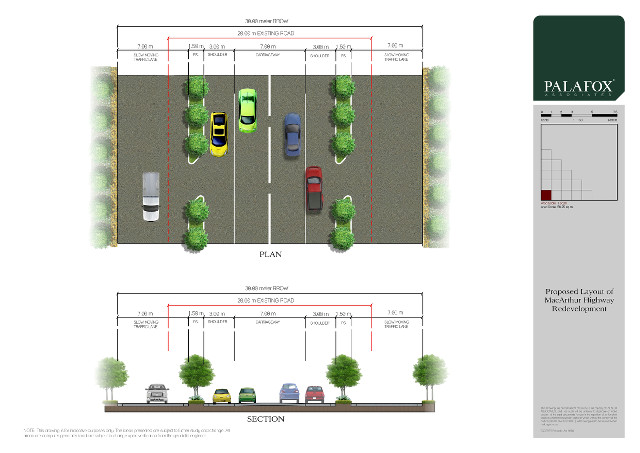
Such roads are already in use today. For instance, the portion of Katipunan Avenue near the University of the Philippines Diliman and Manila Water still boasts towering acacia trees despite a road-widening project.
The survival of these trees had also been fought for by environmental advocates back in the early 2000s.
Palafox committed to helping DPWH with creating tree-incorporated road designs, designs DPWH Secretary Rogelio Singson said he is open to. However, because of budget allocations already set for the year, the implementation may have to wait.
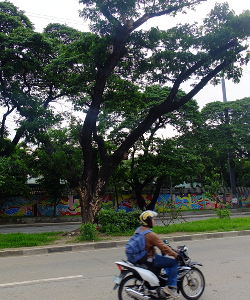
Providing bike and pedestrian lanes and investing in more efficient bus and train systems would encourage more people to leave their cars in the garage and take public transport.
With less cars, there will be less need to widen roads, she said.
Trees vs road right of way
Thousands of trees have already been cut in Pangasinan, Laguna, Sorsogon, Baguio, and Cebu to give way to DPWH’s road-widening projects meant to bring development and ease of access to the provinces. (READ: ‘Mass murder’ in Mt. Makiling)
The trees are often cut because they stand on “our existing road right of way,” said DPWH’s Singson.
Though existing laws prohibit the cutting of trees in public spaces, exceptions have been made.
One of these exceptions, under section 2.2 of Executive Order No 23 (the moratorium on logging), is the cutting of trees to recover right of way for roads being built by the DPWH.
Tree-cutting to prepare sites for tree plantation, the cutting of pest-infested trees, and tree-cutting associated with cultural practices are also exceptions, explained DENR Secretary Paje.
A memorandum issued by Executive Secretary Paquito Ochoa Jr in 2012 served as a blanket approval for DPWH to cut trees in 8 regions: Regions I, II, IV-A, V, VIII, IX and XI.
Aside from these decrees, many communities actually support the road-widening, believing it would bring economic development and ease traffic congestion, said Singson. This is especially the case when road works necessitate either the cutting of trees or the removal of houses obstructing the right of way.
“If we consult with the affected communities, more often than not their answer is, go ahead and cut them instead of removing our houses. This is where we start having problems. The communities allow their trees to be cut but the NGOs would rather that we do not.”
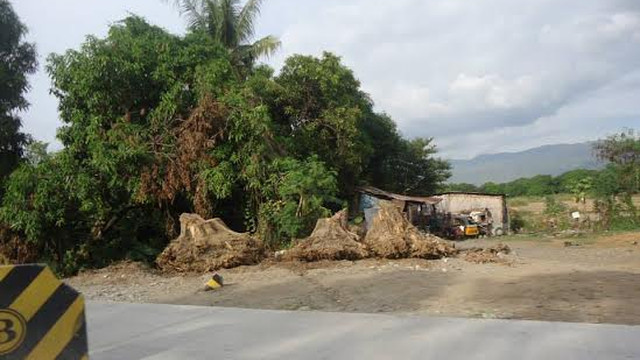
By law, all roads are supposed to have easements or empty spaces running the length of the road.
Easements are a form of weather-proofing because they ensure nothing will fall on the road in times of natural calamity. The inaccessible roads in the aftermath of Typhoon Yolanda underline their importance.
“If you see our experience in Yolanda, the roads were intact but they were not passable because of fallen trees and electric poles,” said the DPWH chief.
But citizen uproar has made Singson think twice before cutting any more trees.
Now, when they see the trees are more or less aligned, DPWH personnel and contractors are instructed not to cut them but to build the road as wide as possible until it reaches the trees.
But when the trees are not aligned, they have no choice but to cut them.
“For public safety, we cannot have crooked roads,” he said.
Hiding behind the budget?
What was the DENR’s role in all this?
DENR Secretary Ramon Paje said that while protecting trees is upheld by the Constitution, he had to give in to the development projects since they were already given a budget.
“I cannot disobey the Appropriations Act. Those roads will be built,” he told environmental advocates.
His agency is also limited by the exceptions granted to road works, especially projects stamped as priorities by President Benigno Aquino III.
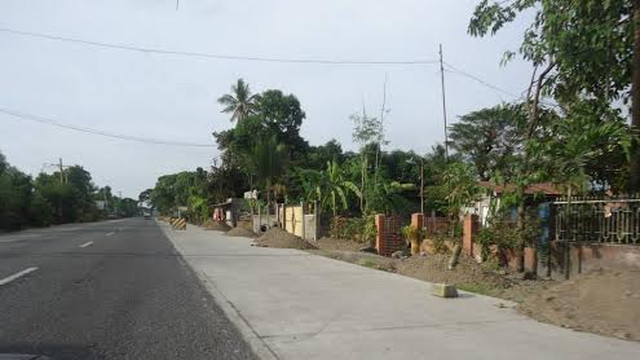
Since Ochoa’s memorandum is in force, the DENR focuses on ensuring the DPWH complies with the requirement that, for every tree cut in the name of road-widening, they must plant 100 3-foot-high seedlings.
“The DPWH is complying very well,” he said.
Paje urged advocates to instead be “forward-thinking” and instead help the DENR save urban parks and trees in protected areas. (READ: After 40 trees fall, DENR complies with court order)
Despite assurances by both secretaries, reactors from NGOs still had grievances to air.
Environmental lawyer Galahad Pe Benito questioned where the DENR’s loyalties lie. It seemed Ochoa’s controversial permit was not even questioned by the agency, despite its mandate to prevent environmental destruction.
“The DENR is supposed to be an advocate of the environment but it seems to be leaning more towards economic development,” he said.
He also demanded to know how road-widening projects worth billions in taxpayer’s money seemed to not take into account environmental impacts.
“Based on Presidential Decree No 1152 (Philippine Environment Code), all government agencies should consider environmental impacts for all their projects. Under the law, government must prove they are implementing the best project. This requires public consultation and obtaining position papers from affected groups,” Benito said.
The fact that there was no public consultation before budget allocation could be grounds for nullifying the projects, he said.
If there was genuine consultation, suggestions like road designs with trees could have been considered for budgeting. – Rappler.com
Add a comment
How does this make you feel?

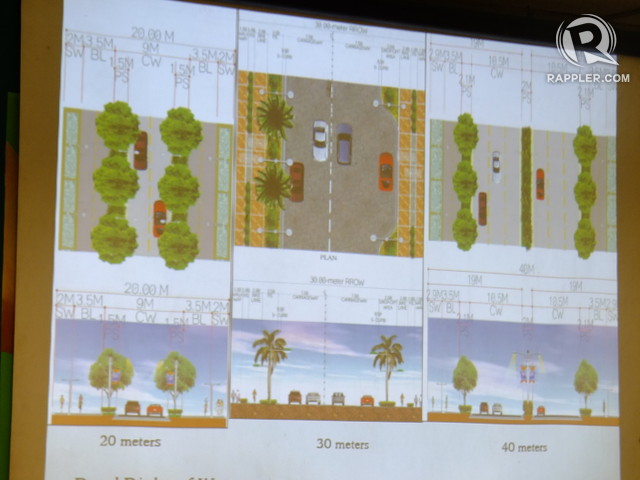
There are no comments yet. Add your comment to start the conversation.